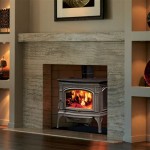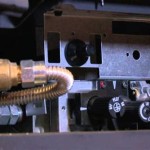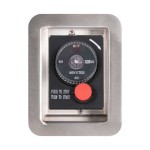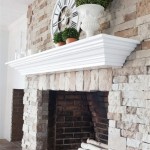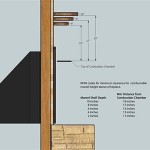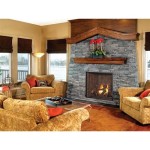Building a Fire in a Fireplace: A Comprehensive Guide
The act of building a fire in a fireplace is an ancient tradition, providing warmth, light, and a focal point for social gatherings. While the fundamentals remain consistent, achieving a successful and safe fire requires understanding certain principles and techniques. This guide provides a step-by-step approach to building and maintaining a fire, covering essential materials, safety precautions, and troubleshooting common issues.
Preparing the Fireplace and Chimney
Before initiating the process of building a fire, it is crucial to ensure the fireplace and chimney are in optimal condition. This preparation contributes significantly to both the success of the fire and the safety of the environment.
The initial step involves a thorough inspection of the fireplace. Any accumulated ash from previous fires should be removed. Leaving excessive ash can impede airflow, reducing the efficiency of the draft and potentially hindering the combustion process. A shovel and metal container are recommended for the safe removal and disposal of ash. Ensure the ash is completely cool before disposal to prevent accidental fires.
The damper, a metal plate located within the chimney, must be fully opened before starting the fire. The damper's primary function is to regulate airflow, allowing smoke and combustion gases to be effectively vented out of the chimney. A closed or partially closed damper will cause smoke to back up into the room, creating a hazardous environment and potentially triggering smoke alarms. The damper control is typically located either above the firebox or within it, and its position should be clearly marked. Verify the damper's functionality by visually confirming it can open and close freely without obstruction.
A clean chimney is paramount for safe and efficient fireplace operation. Creosote, a byproduct of incomplete combustion, accumulates on the inner walls of the chimney. This substance is highly flammable and poses a significant fire hazard. Regular chimney inspections and cleaning by a qualified professional are essential, ideally annually, or more frequently if the fireplace is used extensively. Ignoring creosote buildup can lead to a chimney fire, which can quickly spread to the surrounding structure. The frequency of cleaning depends on the type of wood burned, the frequency of use, and the efficiency of the fireplace.
Finally, consider the surrounding area of the fireplace. Remove any flammable materials, such as rugs, curtains, or furniture, from close proximity to the firebox. A fireplace screen is also highly recommended. The screen prevents sparks and embers from escaping the fireplace and potentially igniting nearby materials. Children and pets should be supervised around the fireplace at all times to prevent accidental burns or injuries.
Gathering the Necessary Materials
The selection of appropriate materials is essential for building a successful and sustainable fire. These materials are typically categorized into three main components: tinder, kindling, and firewood.
Tinder refers to easily combustible materials that will readily ignite from a small flame. Ideal tinder options include dry leaves, pine needles, birch bark, cotton balls coated in petroleum jelly, or commercially available fire starters. The key characteristic of effective tinder is its ability to catch fire quickly and sustain a flame long enough to ignite the kindling. The amount of tinder required will vary depending on its flammability; however, a generous amount is recommended to ensure a successful start.
Kindling consists of small, dry twigs and branches that are larger than tinder but still easily ignited. Kindling serves as a transition between the tinder and the larger firewood, gradually increasing the size of the flame and creating a bed of embers for the firewood to catch. Softwoods, such as pine or cedar, are generally preferred for kindling due to their higher resin content, which makes them more flammable. The kindling should be thoroughly dried to ensure it ignites easily. A variety of sizes of kindling is beneficial, gradually increasing in diameter to effectively transfer the flame to the firewood.
Firewood comprises the primary fuel source for the fire. Hardwoods, such as oak, maple, and ash, are generally preferred for firewood due to their density and slow burning rate, which provides sustained heat output. Softwoods can be used as firewood, but they tend to burn more quickly and produce more smoke and creosote. The firewood must be thoroughly seasoned, meaning it has been dried for at least six months, preferably longer. Seasoning reduces the moisture content of the wood, improving its combustibility and reducing smoke production. Firewood should be stored in a dry, well-ventilated area, away from direct contact with the ground. Different sizes of firewood are often useful, with smaller pieces used to get the fire started and larger pieces added once a strong bed of embers is established.
Building the Fire: Step-by-Step
The process of building a fire involves arranging the tinder, kindling, and firewood in a manner that promotes efficient combustion and sustained burning. Several methods exist, each with its own advantages and disadvantages.
One common method is the teepee structure. Begin by placing a generous amount of tinder in the center of the fireplace. Arrange the kindling around the tinder in a cone shape, leaving spaces for airflow. Ensure the kindling is leaning inwards, creating a miniature teepee. Once the kindling is burning steadily, carefully add smaller pieces of firewood to the outside of the teepee, gradually increasing the size of the wood as the fire grows. This method provides good airflow and allows the flames to easily reach the kindling and firewood.
Another popular method is the log cabin structure. Place two larger pieces of firewood parallel to each other, with a small space in between. Lay two more pieces of firewood perpendicular to the first two, forming a square or rectangle. Continue layering the firewood in this manner, gradually building a cabin-like structure. Place the tinder and kindling in the center of the cabin, under the firewood. This method provides a stable base for the fire and allows for a longer burning time. However, it may require more kindling to get started and may not provide as much initial airflow as the teepee method.
Regardless of the chosen method, the fire should be ignited at the base of the tinder. A long match or lighter is recommended to avoid getting too close to the flames. Once the tinder is burning, allow it to establish a strong flame before adding more kindling or firewood. It is crucial to monitor the fire closely and adjust the arrangement of the wood as needed to maintain a steady burn. Avoid overloading the fire with too much wood at once, as this can smother the flames and reduce airflow.
Maintaining a consistent airflow is essential for a successful fire. If the fire is struggling to burn, add more kindling or reposition the wood to improve ventilation. Ensure the damper is fully open to allow smoke and combustion gases to escape effectively. The goal is to create a self-sustaining fire that burns cleanly and efficiently, providing warmth and ambiance without excessive smoke or creosote buildup.
Finally, never leave a fire unattended. Always ensure the fire is completely extinguished before leaving the room or going to bed. This can be achieved by allowing the fire to burn down completely or by carefully extinguishing the embers with water. It is crucial to exercise caution when extinguishing a fire to prevent steam burns.

How To Build And Start A Fire In Your Fireplace Full Service Chimney

How To Build And Start A Fire In Your Fireplace Full Service Chimney

2 Foolproof Ways To Start A Fire In Fireplace Advice From Bob Vila

How To Start A Fireplace Fire The Home Depot
How To Start A Fireplace Fire 2 Safe And Easy Methods

How To Build An Upside Down Fire The Only Fireplace Method You Ll Ever Need Blog Of Author Tim Ferriss

How To Properly Start A Fire In Your Fireplace

Master The Art Of Efficiently Building A Fire

How To Light A Fire In Fireplace With S Wikihow

Home
Related Posts

